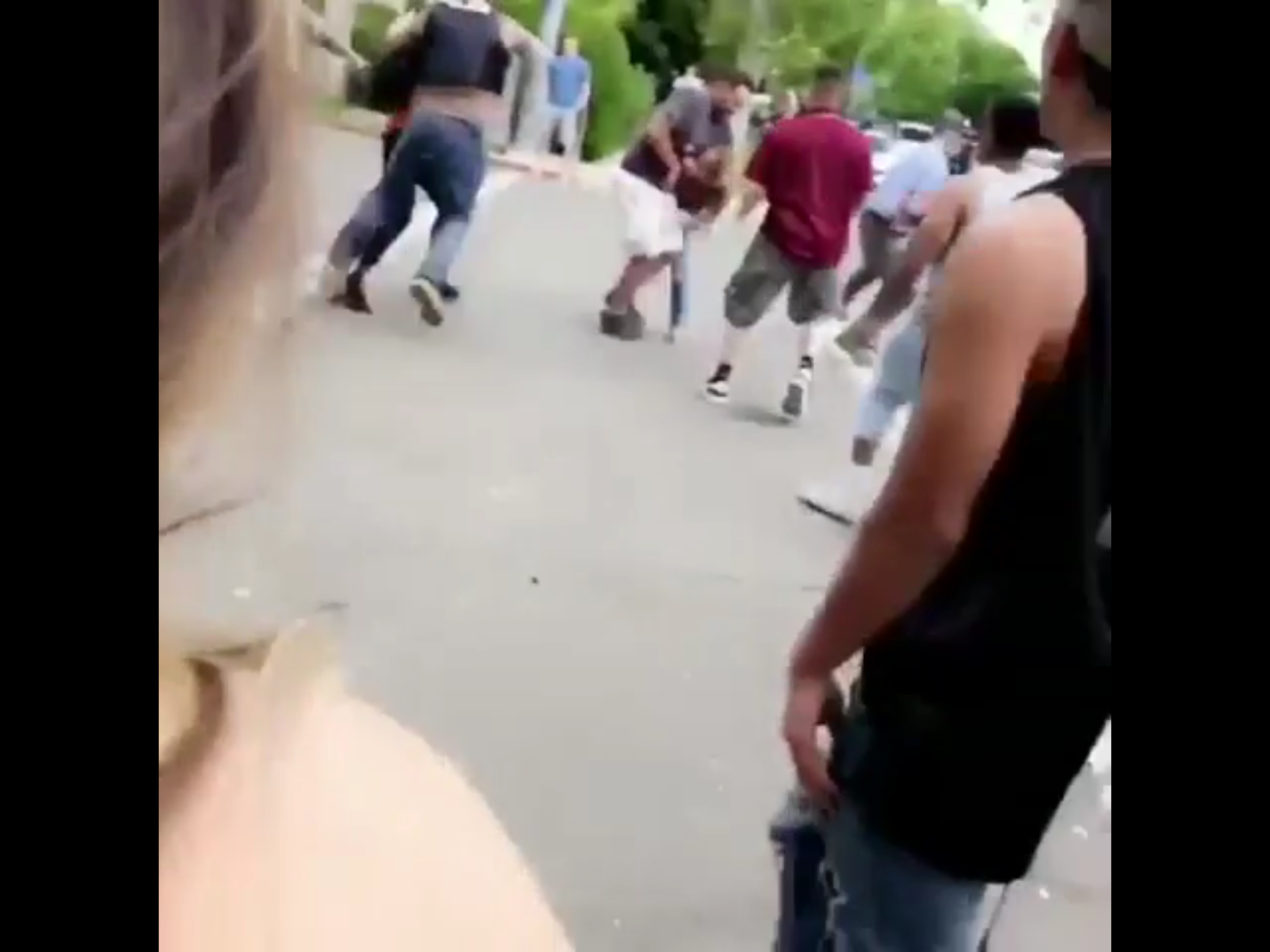
It was inevitable, once a report came out suggesting police officers were attacked and beaten on Picnic Day, that Picnic Day itself would come under attack.
Once again it comes from veteran columnist Bob Dunning, who writes that “when police officers are beaten by a gang of thugs, the car of a 21-year-old woman driving home from work is trashed by a drunken mob, a gun is brandished downtown and several gunshots are reported near the UC Davis campus, it is once again time for a serious evaluation of this once-cherished event.”
He quotes a friend saying, “Does somebody have to die before it is canceled… Unfortunately, that is the path we are on.”
Clearly, the police incident colors the view of Mr. Dunning – but he again relies heavily on police accounts of what happened.
Mr. Dunning quotes the Enterprise account of the event, “Early alcohol consumption, numerous house parties and throngs of out-of-town visitors made Picnic Day no picnic for Davis police officers, including two who landed in the hospital after being attacked by what was described as a hostile Russell Boulevard crowd.”
In comments to me, Chief Darren Pytel made it a point to note the difference between drunken college students and out-of-towners. The picture painted here is that the problems occurred due to hostile and drunk people from outside of town.
This prompted attorney Mark Reichel, representing Elijah Williams, to ponder what would happen if the scene were reversed and three Davis residents had gotten into a fight outside a Sacramento Kings game. He writes on Facebook, “If that happened, would the internet and facebook be exploding with people from Sacramento calling the Davis residents ‘thugs’ and saying ‘the police should have shot them.’ Would Sacramento residents post pictures of nooses to hang a man with on their facebook posts? Would Sacramento people be interviewed on tv saying, ‘What were they even doing here in Sacramento. Stay in your town.'”
As Joseph Biello, a professor at UC Davis, put it in a comment on the Vanguard yesterday, “This town has to come to grips with the fact that it is a UNIVERSITY TOWN, not a sleepy suburb, nor an island utopia, nor a gated senior citizen’s community. There will be parties and Russell Blvd will be gridlocked during Picnic Day.”
The biggest problem here, of course, is that police reports that have led to some of these conclusions may be without foundation.
Mr. Dunning writes, “One alleged witness claims the police were at fault for not properly identifying themselves, as if beating and kicking someone on the ground and smashing them in the head with a beer bottle is somehow OK if the victim is not a police officer.”
Mr. Dunning opines, “I don’t care if the cops were in plainclothes or riot gear or wearing nothing but Speedos, and I don’t care if they were driving an unmarked car, an MRAP or riding bicycles, nothing justifies the beatings they sustained.
“The alleged witness said she was surprised that none of the many videos shot of the assault have shown up on social media, but the answer is simple: The videos will show that the police acted appropriately,” he said.
There is a problem with this view – it fails to consider the complexity of the situation. Having watched the video that the Vanguard received, I understand completely why it is not broadcast all over social media – the video doesn’t look like the Rodney King beating.
Instead, it is nine seconds of shaky cell phone video that, if you simply watch, you have no idea what you just saw. It took me five hours of going over it frame by frame alongside eyewitness account and explanations to understand what I was seeing.
Writes Mr. Dunning, “Given the intense focus on police misconduct these days and the fact that a dozen or more folks were reported to have been recording this incident, if the police were even remotely out of line, there’d be videos posted all over social media. Trust me on this.”
But he fails to consider the third possibility… At the end of the day, the video I saw doesn’t show police wrongdoing. What it shows is a much more ambiguous scene that at times contradicts police accounts. I have no idea what Chief Pytel has seen in the way of video, he says they have “clear video evidence” – what I saw is that the scene described by the police does not match what is on the video.
To unpack this more, the failure to properly identify themselves is critical. From what Mark Reichel told me, the guys involved – again, who do not know each other and do not have criminal records, by his account – thought that this was a possible group of white supremists who were attacking black people.
Alexander Craver rushes in to defend a woman he thinks is being attacked. The video shows no sign that the attacker was an officer – his badge is not visible. Mr. Craver jumps in, puts the officer in a headlock and they end up wrestling to the ground.
Would he have done that had he known the guy was a police officer?
On the video, we see one bystander attempt to kick an officer, but miss. We do not see anyone beaten while on the ground or a bottle smashed. But what we do see is three one-on-one battles.
While Mr. Dunning writes that “nothing justifies the beatings they sustained,” unless you think you are under attack and are attempting self-defense.
As Rich Rifkin writes in a comment, “If all that is so, it would seem the defendants could mount a self-defense argument, alleging they were attacked by three unknown men and simply defended themselves.”
Mr. Rifkin also writes that “DPD needs to rethink its decision to have cops arrive in an unmarked car wearing mufti in a volatile situation like this.”
He adds that “it seems to me that the Davis Police Department made a serious error in judgment by sending in police officers who were not in uniform to conduct crowd control. If those officers had been wearing their uniforms, the crowd would have at least known that these men were law enforcement officers and their efforts were meant to be helpful. Instead, according to Antwoine Perry, one of those who was arrested, it appeared to him and others in the crowd that these undercover cops were there just to fight, and that he and others had no idea they were cops.”
This is a good point – what is the purpose in showing up without clear identification? This clearly escalated the situation.
From what we see on video, this is a fight, not an attack. Mark Reichel points out that once uniformed officers showed up, the three guys quickly surrendered, which would seem to add to their case.
From my perspective, people jumping in saying that, if there were video showing police wrongdoing it would be out there are missing the point – I have seen the video, the reason it is not out there is that it is hard to see what happens and what you see by itself is not evidence of anything.
But it is enough for me to question the official account by the police of what happened?
I think we need to understand the justification of a law enforcement officer to put a woman in a headlock and punch her. My understanding is that she has contacted some high profile attorneys to see about suing the department.
I am also troubled by what Mark Reichel told me on Friday, that he has talked to about six witnesses so far and they all have given similar accounts – that includes Isabel Lynch, who has already spoken to the media.
He said many of them have spoken to the police and he said, when they gave the account that he has given to the Vanguard, the police “don’t take any more notes and they end the interview.”
I conclude by saying, while I don’t see clear evidence of wrongdoing on the video, there are troubling aspects – including the headlock and the fact that Elijah Williams seems to be simply watching what happens when he gets hit by the other officer from behind – and the main takeaway is that the police account is inconsistent with what we see on the video. While we do not get all of the pieces to the puzzle, the narrative given by the defendants seems more consistent with what occurs on the video.
—David M. Greenwald reporting







Since you quoted me, I would like to flesh out my point.
The still frames you showed yesterday are clear about one thing – whatever went down went down fast. The police may have THOUGHT they identified themselves, but they were 15-20 yards from the men they ended up arresting – maybe the guys didn’t hear. There is a clearly plausible story on both sides of this issue and my guess is that none of the videos are as conclusive as anyone would hope.
My bigger point is that Davis (campus and city) is having growing pains. Picnic day is a condensed example of that. While it is absolutely unacceptable to have a rolling shooting on 113 (is this rumor true?) or a woman terrorized in her car while people jump on it (also, is this rumor true?), it is, however, reasonable to expect some gnarly traffic and young people crowding sidewalks and even streets.
We must also take care to lump everyone into “out of towners causing mayhem”. This is a statement of prejudice (which borders on racism). Putting it in perspective – 50-100,000 people come to Davis for Picnic Day. Other than noise complaints and the general problems we see when university parties occur, it seems that 3 incidents happened which put people in harms way (the jumping on the car, the apparent rolling shooting and this incident here).
Furthermore, the cop/civilian fight may have been completely avoided by (a) police NOT wearing plain clothes and (b) the city/university having a more reasonable sense of when and what kind of behavior we will turn a blind eye to on picnic day.
The police have their rationale for being in plain clothes, but my guess is that it is intended to arrest inebriated people – or maybe drug dealers? However, maybe that should NOT be the main objective on picnic day – rather we should say, all the police should wear uniforms because that acts as a deterrent, yet they should realize some people will behave like jerks.
Speak softly, carry a big stick.
Make sure everyone sees that stick…. but use the stick sparingly.